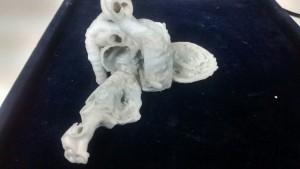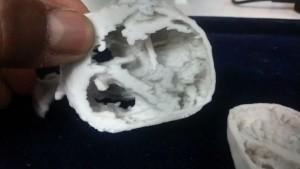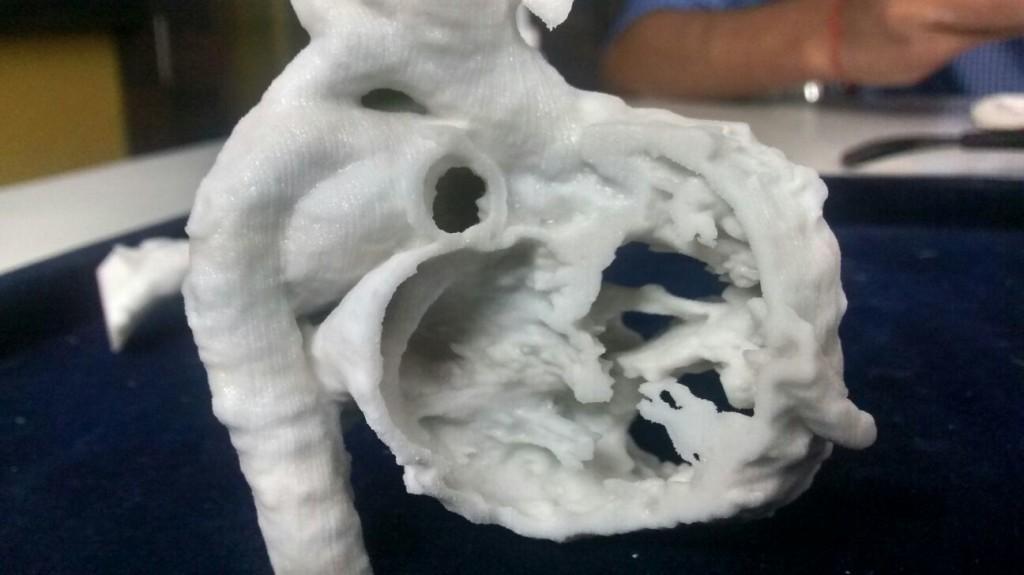 The human heart is an incredibly complex organ, and, like any complex structure, there are a frightening amount of things that can go wrong with it. One of the most devastating things a parent can hear is that their child has a defective heart. When the parents of a baby named Ram received the news that their son had a complicated, difficult to treat form of heart disease, they were shattered but refused to give up hope. After being denied by several hospitals who thought that an operation would be too difficult and dangerous, Ram’s parents, who hail from Tamil Nadu, India, brought their 2-month-old son to the Amrita Institute of Medical Sciences (AIMS).
The human heart is an incredibly complex organ, and, like any complex structure, there are a frightening amount of things that can go wrong with it. One of the most devastating things a parent can hear is that their child has a defective heart. When the parents of a baby named Ram received the news that their son had a complicated, difficult to treat form of heart disease, they were shattered but refused to give up hope. After being denied by several hospitals who thought that an operation would be too difficult and dangerous, Ram’s parents, who hail from Tamil Nadu, India, brought their 2-month-old son to the Amrita Institute of Medical Sciences (AIMS).
You may recall AIMS for the heart surgeries that saved the lives of two teenage patients this past August. The surgeries were successful largely thanks to 3D printed models of the patients’ hearts, which enabled the surgeons to carefully plan and prepare for the risky procedures.
When doctors at AIMS examined baby Ram, the findings were grim: he had a rare condition known as “criss-cross heart,” which meant that the main chambers and valves of his heart were badly twisted. To make matters worse, his arteries were wrongly connected, the main artery was obstructed, and he had a hole in his heart.
 The decision to operate was a difficult one, but Dr. Mahesh Kappanayil, who had worked with the two teenage patients earlier this year, thought that he could use the same technology to help Ram. The only problem was that, because the heart models used in the previous cases had been printed overseas, there had been a long turnaround time and high costs involved. Then he heard of Mumbai’s Sahas Softech LLP, which supplied a 3D printed heart model that was utilized in a successful operation on a baby named Lavesh Navedkar earlier this year.
The decision to operate was a difficult one, but Dr. Mahesh Kappanayil, who had worked with the two teenage patients earlier this year, thought that he could use the same technology to help Ram. The only problem was that, because the heart models used in the previous cases had been printed overseas, there had been a long turnaround time and high costs involved. Then he heard of Mumbai’s Sahas Softech LLP, which supplied a 3D printed heart model that was utilized in a successful operation on a baby named Lavesh Navedkar earlier this year.
“I realized that the expertise and potential for creating 3D printed heart models existed right here in India,” said Dr. Mahesh.
Ram’s cardiac MRI and CT scans were sent to Firoza Kothari at Sahas, who collaborated with Dr. Mahesh via web meetings. Only 24 hours later, a 3D printed model of Ram’s heart was completed and shipped to AIMS, at which point the cardiac team examined it and got a much clearer understanding of the disease than they had previously had.
“All the intricate details of Ram’s heart and its abnormalities became clearly evident – much more than what was possible through all his previous scans,” said Dr. Mahesh. “Using the model, his surgery could be precisely planned and executed on the same day, with a much shorter surgery time than otherwise. The surgery was successful and Ram recovered well. He is currently doing fine. He will need multiple staged cardiac surgeries in the future for correction of his heart defects – but the success of this crucial first surgery may have been impossible without the aid of 3D Printing technology.”
Dr. Mahesh’s words are being echoed by a number of pediatric surgeons in India, largely thanks to Sahas Softech. The medical team at Fortis Child Heart Mission, which had operated on Lavesh Navedkar, successfully operated on an 11-year-old patient with a congenital heart defect two months ago. This patient, like baby Ram, had unbelievably complex problems with his heart: his right ventricle was on the left side and there was a hole in his heart, as well as other defects.
The team had two options: a dangerous surgery that could potentially correct the boy’s heart problems, or a series of palliative surgeries that would allow him to carry on a normal daily life despite the problems. Because of the risks involved with the corrective surgery, the team decided to go with the palliative option, and placed a shunt in his heart in 2014. A year later, it was time for the final step in the palliative procedure, which was a procedure known as Fontan surgery. The surgery would allow the boy to continue going to school, but he would face physical limits and a shortened life expectancy.
With their confidence boosted by Lavesh Navedkar’s surgery, the team decided to attempt a full repair of the boy’s heart instead. In consultation with Dr. Alpa Bharati of NM Medical Centre and Dr. Swati Garekar at Fortis Hospital, Sahas Softech designed and printed a model of the boy’s heart based on his scans, and now, two months later, the boy is preparing to return to school with a fully functioning heart. Only one year ago, the same procedure was deemed too dangerous based on the imaging technology available then. It’s amazing how fast things can change.
India itself is on track to see its 3D printing market expand significantly over the coming years, and in just two weeks will host its first Inside 3D Printing Conference event in Mumbai. Let’s hear your thoughts on yet another incredible use of 3D printing within the medical field. Discuss this story in the 3D Printing and Pediatric Patients forum thread on 3DPB.com.
Subscribe to Our Email Newsletter
Stay up-to-date on all the latest news from the 3D printing industry and receive information and offers from third party vendors.
Print Services
Upload your 3D Models and get them printed quickly and efficiently.
You May Also Like
Havaianas Collaborates with Zellerfeld to Launch 3D Printed Flip-Flops
The shoe of the summer is undoubtedly the flip-flop. Easy on, easy off, your feet won’t get sweaty because there’s not much material, and they’re available in a veritable rainbow...
UCLA Researchers Develop 3D Printed Pen that May Help Detect Parkinson’s Disease
Diagnosing Parkinson’s disease is difficult. Often, early symptoms of the progressive neurological condition may be overlooked, or mistaken for signs of aging. Early diagnosis can help save lives and improve...
Printing Money Episode 30: Q1 2025 Public 3D Printing Earnings Review with Troy Jensen, Cantor Fitzgerald
Printing Money is back with Episode 30, and it’s that quarterly time, so we are happy and thankful to welcome back Troy Jensen (Managing Director, Cantor Fitzgerald) to review the...
Heating Up: 3D Systems’ Scott Green Discusses 3D Printing’s Potential in the Data Center Industry
The relentless rise of NVIDIA, the steadily increasing pledges of major private and public investments in national infrastructure projects around the world, and the general cultural obsession with AI have...



































